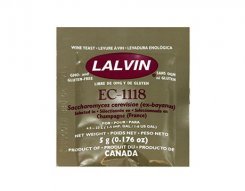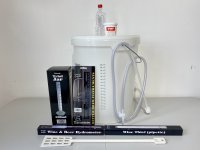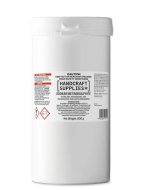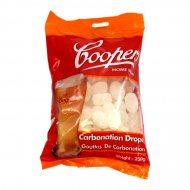The meaning of Fermentation | Fermenting
Fermentation is a metabolic process during which microorganisms, such as bacteria, yeast, or fungi, convert carbohydrates (sugars and starches) into alcohol, acids, or gases. It is a natural and ancient technique used for preserving food, producing alcoholic beverages, and creating various other products.
During Fermentation, microorganisms break down the sugars in the absence of oxygen through a process known as anaerobic respiration. The primary byproducts of Fermentation depend on the specific organisms involved and the conditions under which Fermentation occurs.
Fermentation Equipment
Here are a few common examples of fermentation processes:
- Alcoholic Fermentation produces alcoholic beverages like wine, beer, and spirits. Yeast, a type of fungus, converts sugars into alcohol and carbon dioxide. The carbon dioxide bubbles produced during Fermentation give beverages like beer their characteristic fizz.
- Lactic Acid Fermentation: Fermentation is commonly used to produce fermented foods like yoghurt, sauerkraut, and kimchi. Bacteria, such as Lactobacillus or Lactococcus, convert sugars into lactic acid, which acts as a natural preservative and gives these foods their tangy flavour.
- Acetic Acid Fermentation: Acetic acid fermentation is used to produce vinegar. Acetobacter bacteria convert ethanol (alcohol) into acetic acid in the presence of oxygen. This process occurs when wine or cider is exposed to air, forming vinegar.
- Fermentation in Baking: Yeast is commonly used in baking to leaven bread. Adding yeast to the dough allows it to ferment the sugars present, producing carbon dioxide gas. The carbon dioxide gas is trapped in the dough, causing it to rise and create a light and fluffy texture in the final baked product.
Fermentation has various applications beyond food and beverage production. It produces antibiotics, enzymes, biofuels, and even wastewater treatment. The specific fermentation process depends on the desired end product and the microorganisms involved.
Home brewing and fermenting is a fascinating and enjoyable hobby for creating unique beverages. Whether you're interested in brewing beer, making wine, or fermenting other drinks like kombucha or mead, the process generally involves similar principles. Here's a general guide to homebrew fermenting:

|

|

|

|
- Research and gather supplies: Start by researching the specific type of beverage you want to ferment. Each type may have its specific requirements. Once you understand the process, gather the necessary equipment and ingredients.
- The kit includes a fermenting vessel (such as a plastic bucket or a glass carboy with an airtight lid), airlock, siphoning equipment, brewing ingredients (e.g., malt, hops, yeast for beer), and sanitising solutions.
- Sanitise everything: Proper sanitation is crucial to prevent contamination and off-flavours in your final product. Thoroughly clean and sanitise all your equipment, including fermenting vessels, airlocks, siphoning equipment, and any utensils or containers which will come into contact with the ingredients.
Sanitising Equipent
- Follow a recipe: Find a reliable recipe or brewing guide for the beverage you want to ferment. Recipes typically include detailed instructions on ingredient measurements, brewing times, and fermentation temperatures. Follow the recipe carefully to achieve the desired flavour and quality.
- Prepare the ingredients: Depending on the type of beverage, you may need to prepare the elements differently. For example, in beer brewing, you'll typically mash grains, boil the wort, add hops, cool the mixture, and then transfer it to the fermenting vessel. Follow the recipe instructions for your chosen beverage.

- Pitch the yeast: Once the wort or juice is prepared, it's time to introduce it.
Yeast converts the sugars in any mixture into alcohol and carbon dioxide during Fermentation. Follow the recipe's instructions for pitching the yeast at the appropriate temperature and ensure proper aeration of the mix. - Fermentation: Transfer the mixture to the fermenting vessel, seal it with an airlock, and store it in a dark, cool place with a consistent temperature. The fermentation process may take a few days to several weeks, depending on the beverage and recipe. Monitor the airlock for signs of Fermentation, such as bubbles or the release of carbon dioxide.
- Secondary fermentation (optional): Some beverages, like wine or certain beer styles, may require a secondary fermentation phase. Secondary Fermentation involves transferring the fermented liquid to a separate vessel to clarify and further develop flavours.
- Bottling and carbonation: Once Fermentation is complete, it's time to bottle your beverage. Clean and sanitise your bottles, then transfer the liquid, leaving any sediment or solids behind. Depending on the drink, you may need to add priming sugar or other carbonation methods to achieve the desired level of carbonation in the bottle.
Bottling and Carbonation
- Ageing and maturation: Some beverages benefit from ageing and development to develop complex flavours and harsh mellow characteristics. Follow the recipe's recommendations for ageing times and conditions.
- Enjoy responsibly: After proper ageing, your homemade beverage is ready to be enjoyed! Please share it with friends and family, and appreciate the fruits of your labour.
Remember, brewing and fermenting involve various techniques and considerations depending on the beverage. It's always a good idea to consult detailed recipes and guides for your chosen brew to ensure the best results.














































